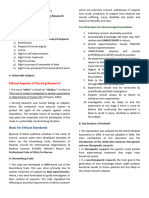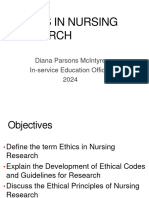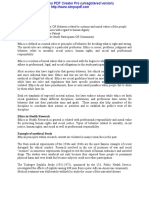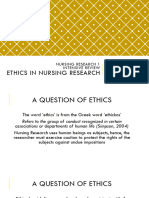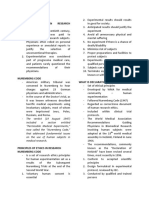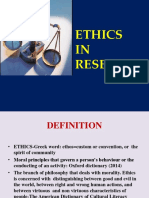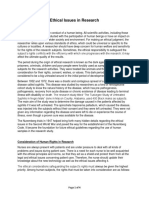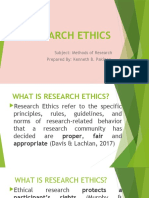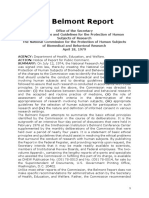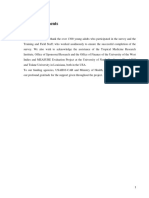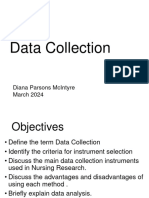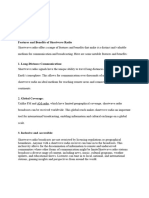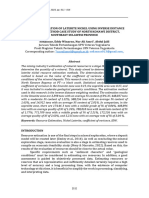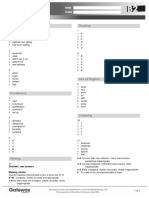0% found this document useful (0 votes)
38 views43 pagesEthical Issues in Nursin Research
The document provides an overview of ethical issues in nursing research, including historical examples of unethical research, various codes of ethics that have been developed, and the three primary ethical principles of beneficence, respect for human dignity, and justice as outlined in the Belmont Report. Procedures for protecting research participants based on these principles are also discussed.
Uploaded by
NicoleCopyright
© © All Rights Reserved
We take content rights seriously. If you suspect this is your content, claim it here.
Available Formats
Download as PPTX, PDF, TXT or read online on Scribd
0% found this document useful (0 votes)
38 views43 pagesEthical Issues in Nursin Research
The document provides an overview of ethical issues in nursing research, including historical examples of unethical research, various codes of ethics that have been developed, and the three primary ethical principles of beneficence, respect for human dignity, and justice as outlined in the Belmont Report. Procedures for protecting research participants based on these principles are also discussed.
Uploaded by
NicoleCopyright
© © All Rights Reserved
We take content rights seriously. If you suspect this is your content, claim it here.
Available Formats
Download as PPTX, PDF, TXT or read online on Scribd
/ 43








